
Salamanca: Madrid's Chic and Cultural Jewel
Discover Salamanca in Madrid: A blend of luxury shopping, gourmet dining, and rich cultural heritage in one of the city's most elegant neighborhoods.
Salamanca, located in the heart of Madrid, is a neighborhood that epitomizes elegance and sophistication. Known for its upscale shopping streets, such as Calle Serrano and Calle de José Ortega y Gasset, Salamanca is a paradise for fashion enthusiasts. Here, you'll find flagship stores of renowned designers, chic boutiques, and high-end brands that make shopping an experience in itself. The area is also home to gourmet restaurants and trendy cafes, offering a delightful culinary journey through Spanish and international cuisines. Salamanca is not just about luxury and fashion; it also boasts a rich cultural heritage. The neighborhood is dotted with architectural gems, from classic 19th-century buildings to modern masterpieces. Museums like the National Archaeological Museum and the Lázaro Galdiano Museum offer a peek into Spain's fascinating history and art. The streets themselves are a gallery, with stunning facades and elegant parks like El Retiro, providing a serene escape from the city's hustle and bustle. For those who enjoy the finer things in life, Salamanca offers an array of top-notch experiences. Whether it's a leisurely stroll down its tree-lined avenues, a visit to a stylish bar for an evening cocktail, or a day spent exploring its cultural treasures, Salamanca promises a memorable stay. It's a neighborhood that seamlessly blends the old with the new, making it a must-visit for anyone looking to experience the best of Madrid.
Local tips in Salamanca
- Visit El Retiro Park early in the morning to enjoy its tranquility.
- Make reservations in advance for popular restaurants, especially on weekends.
- Wear comfortable shoes as the best way to explore Salamanca is on foot.
- Check out local events and exhibitions at the National Archaeological Museum.
Salamanca: Madrid's Chic and Cultural Jewel
Salamanca, located in the heart of Madrid, is a neighborhood that epitomizes elegance and sophistication. Known for its upscale shopping streets, such as Calle Serrano and Calle de José Ortega y Gasset, Salamanca is a paradise for fashion enthusiasts. Here, you'll find flagship stores of renowned designers, chic boutiques, and high-end brands that make shopping an experience in itself. The area is also home to gourmet restaurants and trendy cafes, offering a delightful culinary journey through Spanish and international cuisines. Salamanca is not just about luxury and fashion; it also boasts a rich cultural heritage. The neighborhood is dotted with architectural gems, from classic 19th-century buildings to modern masterpieces. Museums like the National Archaeological Museum and the Lázaro Galdiano Museum offer a peek into Spain's fascinating history and art. The streets themselves are a gallery, with stunning facades and elegant parks like El Retiro, providing a serene escape from the city's hustle and bustle. For those who enjoy the finer things in life, Salamanca offers an array of top-notch experiences. Whether it's a leisurely stroll down its tree-lined avenues, a visit to a stylish bar for an evening cocktail, or a day spent exploring its cultural treasures, Salamanca promises a memorable stay. It's a neighborhood that seamlessly blends the old with the new, making it a must-visit for anyone looking to experience the best of Madrid.
Iconic landmarks you can’t miss
El Retiro Park
Explore El Retiro Park, Madrid's enchanting green space filled with gardens, sculptures, and serene lakes, perfect for relaxation and cultural experiences.
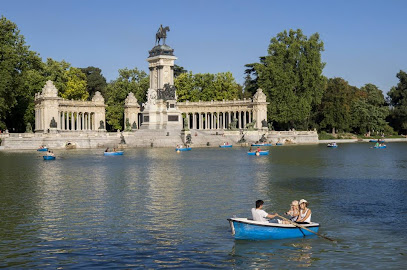
Plaza Mayor
Discover the charm of Plaza Mayor, Madrid's historic square filled with culture, architecture, and vibrant local life.
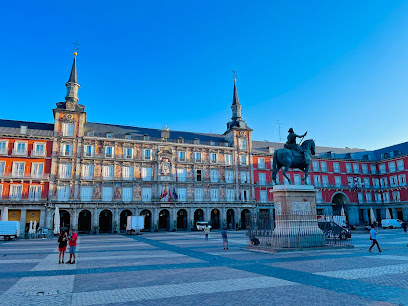
Puerta de Alcalá
Discover the stunning Puerta de Alcalá, a neoclassical monument and iconic symbol of Madrid's rich history and vibrant culture.
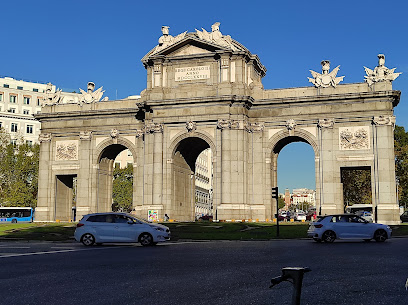
Las Ventas Bullring
Discover the essence of Spanish culture at Las Ventas Bullring, a historic monument and vibrant event venue in Madrid.

Velázquez Palace
Explore the splendid Velázquez Palace in El Retiro Park, a must-visit museum showcasing modern art masterpieces in a stunning architectural setting.
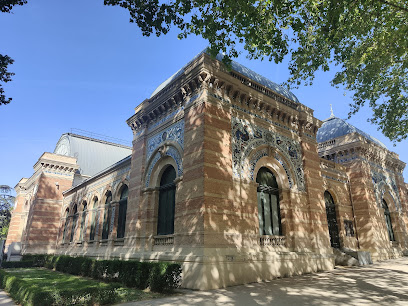
Casa de América
Experience the vibrant cultural exchange at Casa de América, a dynamic center celebrating the arts and heritage of Latin America in the heart of Madrid.
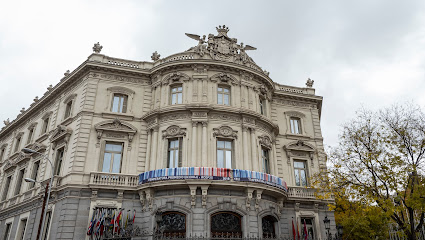
Monumento a Blas de Lezo
Visit the Monumento a Blas de Lezo in Madrid, a stunning sculpture honoring a naval hero, surrounded by beauty and history in the Salamanca district.
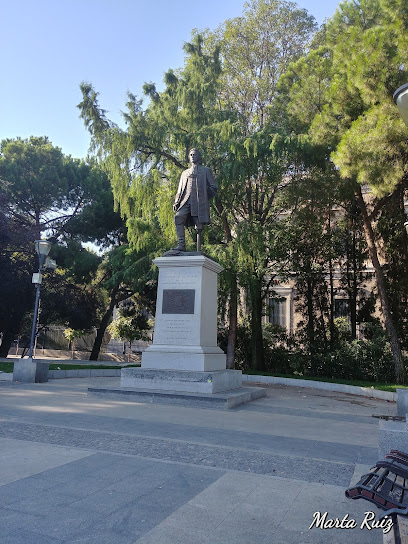
Museo Arte Público
Explore the Museo Arte Público in Madrid, an open-air museum showcasing stunning contemporary sculptures and installations in a vibrant urban setting.
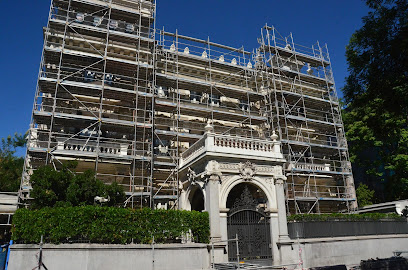
Monument to Christopher Columbus
Discover the Monument to Christopher Columbus in Madrid, where history meets art in the vibrant Plaza de Colón.
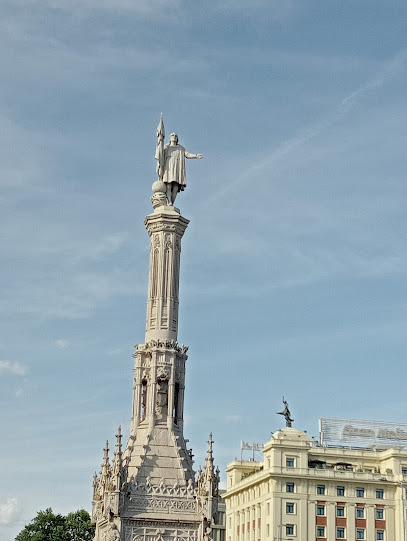
Descubrimiento Garden
Discover tranquility at Descubrimiento Garden, a stunning green oasis in Salamanca, Madrid, perfect for relaxation and scenic strolls.
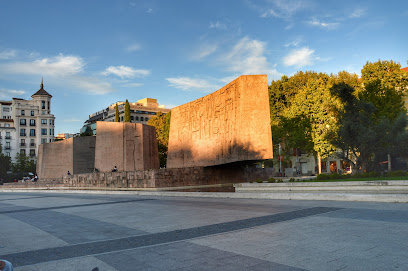
Palacio del Marqués de Salamanca
Explore the exquisite Palacio del Marqués de Salamanca, a neoclassical architectural marvel in Madrid's Salamanca district, rich in history and beauty.
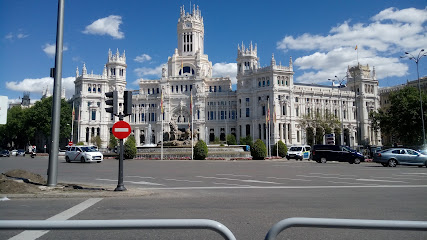
Monumento a Jorge Juan y Santacilia
Discover the Monumento a Jorge Juan y Santacilia in Madrid, a captivating tribute to Spain's maritime heritage and a must-visit historical landmark.
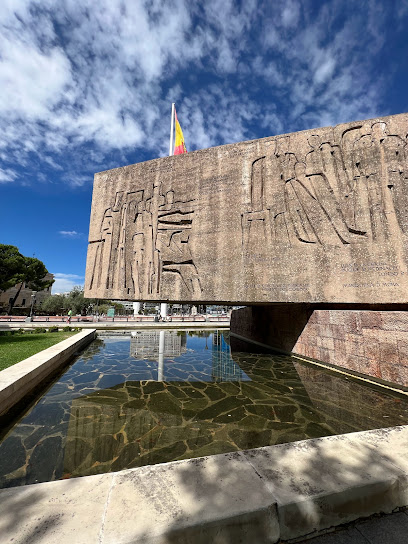
Monumento al Descubrimiento de América
Explore the Monumento al Descubrimiento de América in Madrid, a grand tribute to the Age of Discovery set in the charming Salamanca district.
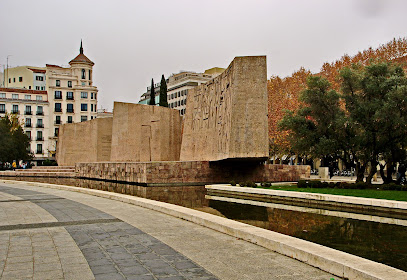
Monumento al Marqués de Salamanca
Explore the Monumento al Marqués de Salamanca in Madrid, a stunning sculpture celebrating the city's rich history and artistic heritage.
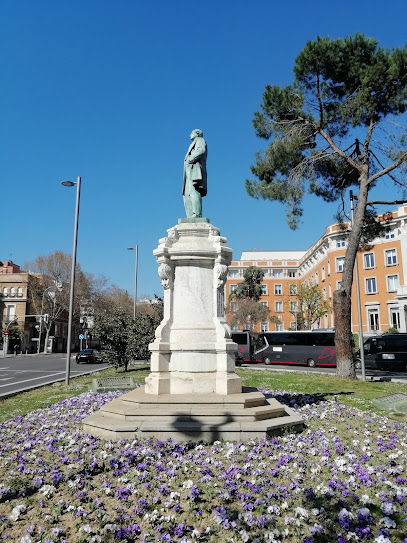
Plaza del Marqués de Salamanca
Experience the elegance of Plaza del Marqués de Salamanca, a charming town square in Madrid's upscale district, perfect for relaxation and local culture.

Unmissable attractions to see
El Retiro Park
Discover the lush landscapes and cultural treasures of El Retiro Park, Madrid's tranquil retreat for relaxation and exploration.
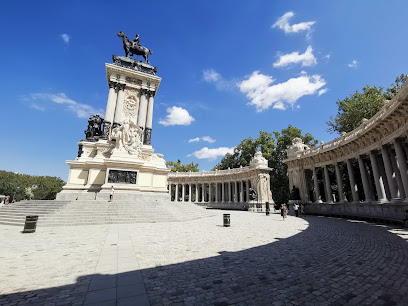
Plaza Mayor
Discover the historic Plaza Mayor in Madrid, a vibrant square filled with stunning architecture and lively cafes, perfect for soaking in the city's essence.
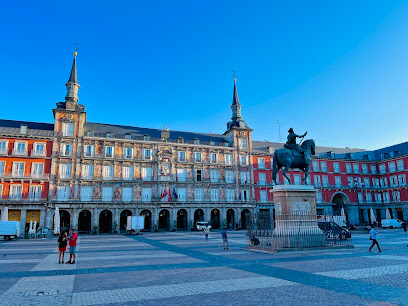
Puerta de Alcalá
Discover the iconic Puerta de Alcalá in Madrid, a magnificent monument steeped in history and architectural beauty, perfect for every traveler.
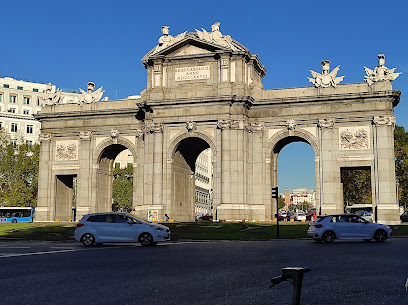
Cibeles Fountain
Explore the iconic Cibeles Fountain in Madrid, a breathtaking historical landmark surrounded by stunning architecture and vibrant city life.
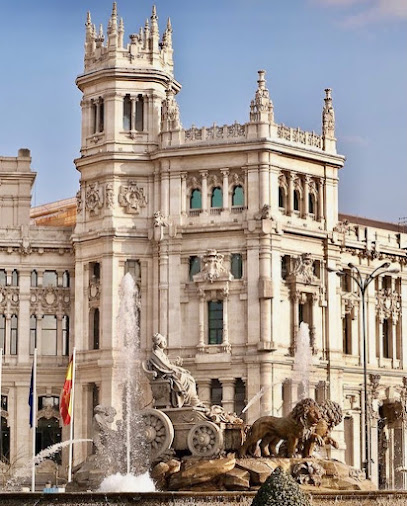
Great Pond of El Retiro
Experience the tranquility of the Great Pond of El Retiro, a stunning park attraction in Madrid perfect for boating, picnics, and leisurely strolls.
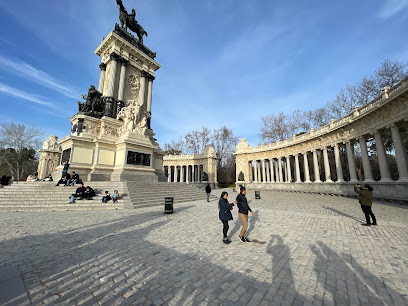
National Archaeological Museum
Explore the National Archaeological Museum in Madrid, home to unique artifacts that illuminate Spain's rich cultural history.
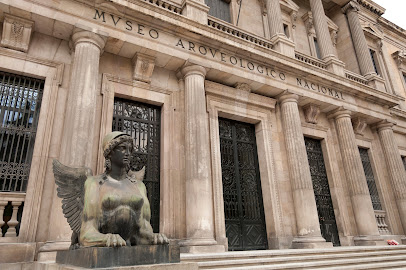
María Eva Duarte de Perón Park
Discover the lush landscapes and serene atmosphere of María Eva Duarte de Perón Park, a perfect escape in Madrid's vibrant Salamanca district.
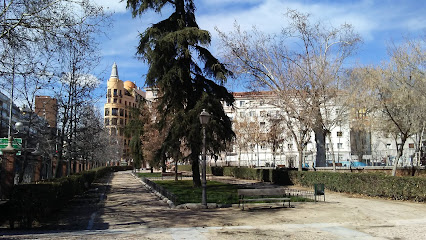
Park plantation of the Berro's fountain
Discover the tranquil beauty of Berro's Fountain Park in Madrid, a historic oasis perfect for relaxation, picnics, and nature walks.
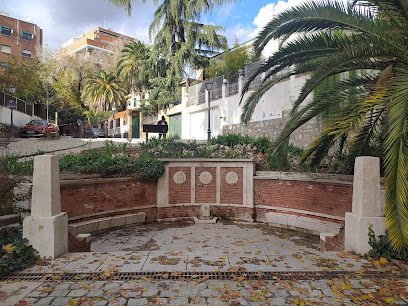
Monument to Alfonso XII
Discover the Monument to Alfonso XII in Parque del Retiro, a stunning tribute surrounded by nature and history in the heart of Madrid.
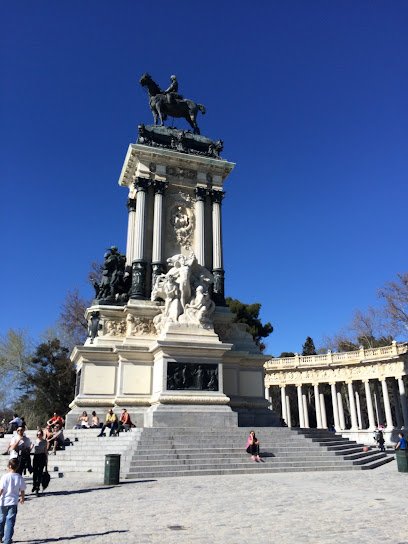
Zero Latency
Discover the thrill of immersive virtual reality gaming at Zero Latency in Madrid, a must-visit attraction for adventure seekers and gamers.

Lázaro Galdiano Museum
Explore the Lázaro Galdiano Museum in Madrid, where art, history, and culture converge in a stunning collection of masterpieces.
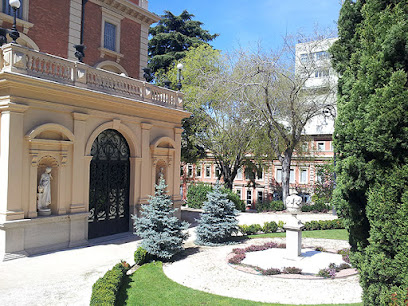
Museo Arte Público
Discover Madrid's Museo Arte Público, an open-air museum featuring stunning contemporary sculptures set against the vibrant city backdrop.

Descubrimiento Garden
Explore Descubrimiento Garden in Salamanca, Madrid—an oasis of tranquility with lush greenery and historical significance.
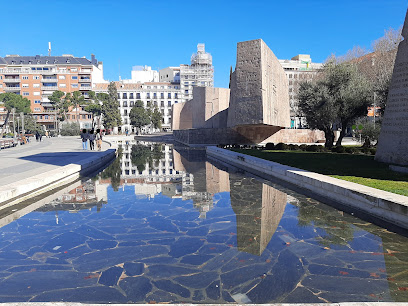
Palacio del Marqués de Salamanca
Explore the exquisite Palacio del Marqués de Salamanca, a breathtaking blend of history and architecture in Madrid's Salamanca district.
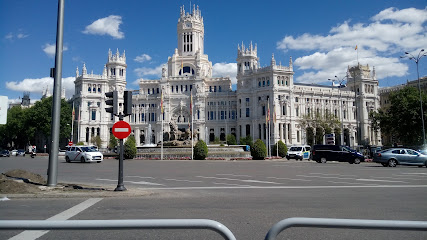
Belles façades
Discover the stunning architectural beauty of Belles Façades in Salamanca, a captivating tourist attraction in Madrid that reflects rich history and elegance.
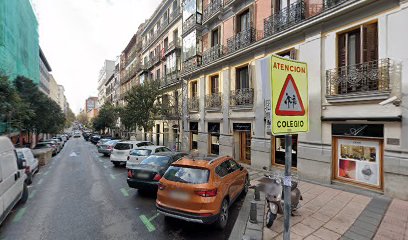
Essential places to dine
Bel Mondo
Discover exquisite Italian dining at Bel Mondo in Madrid's Salamanca district, where enchanting ambiance meets delectable Mediterranean flavors.
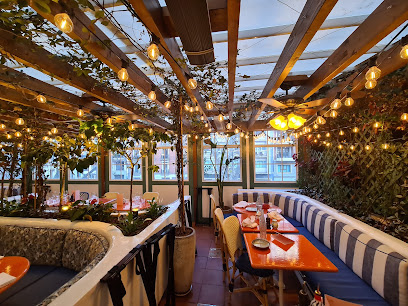
La Maruca
Experience authentic Cantabrian cuisine at La Maruca in Madrid's Salamanca district - where tradition meets modern culinary excellence.
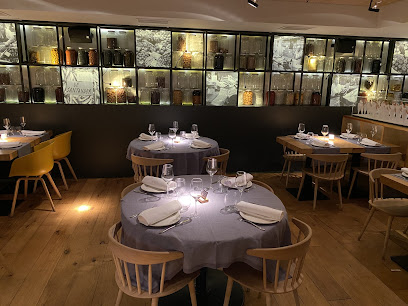
Restaurante Ten Con Ten
Experience the pinnacle of Mediterranean cuisine at Restaurante Ten Con Ten in Madrid's Salamanca district - where tradition meets innovation.
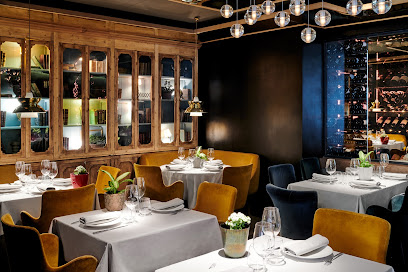
Restaurante Cañadio Madrid
Experience authentic Cantabrian cuisine at Restaurante Cañadio Madrid - where tradition meets modern dining in a vibrant atmosphere.
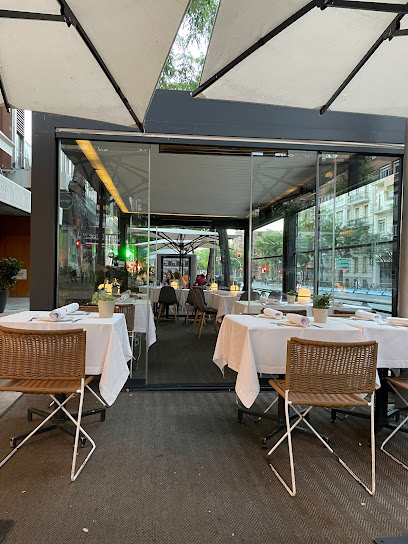
La Bien Aparecida
Experience the best of Cantabrian cuisine at La Bien Aparecida, where Mediterranean flavors meet elegance in the heart of Madrid.
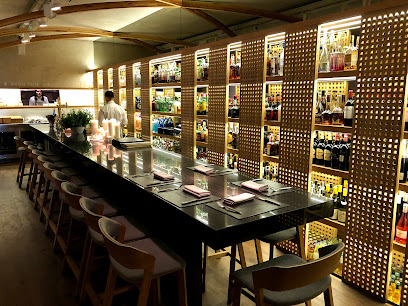
Restaurante O'Caldiño
Experience exquisite Galician cuisine and fresh seafood at Restaurante O'Caldiño in Madrid's Salamanca district.

La Vaca y La Huerta - Restaurante barrio Salamanca
Discover La Vaca y La Huerta: A Mediterranean culinary delight in Madrid's Salamanca district known for its exquisite grill specialties.

Ramón Freixa Madrid
Experience exquisite Mediterranean fine dining at Ramón Freixa Madrid - where culinary art meets luxury in every dish.
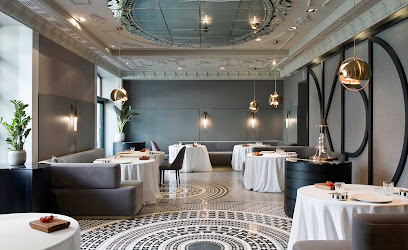
La Parrilla de Salamanca - Restaurante Barrio de Salamanca
Experience culinary excellence at La Parrilla de Salamanca - where grilled perfection meets vibrant cocktails in Madrid's prestigious district.
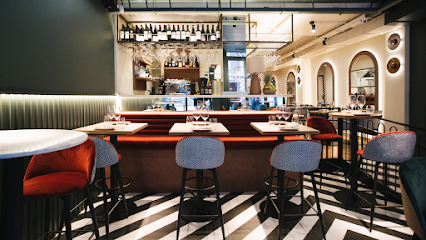
Restaurante Barra Alta Madrid
Discover authentic Mediterranean flavors and vibrant tapas at Restaurante Barra Alta in Madrid's Salamanca district.

Markets, malls and hidden boutiques
Natura
Discover unique gifts and trendy clothing at Natura, a vibrant shop in Madrid's upscale Salamanca district, perfect for capturing the essence of Spain.
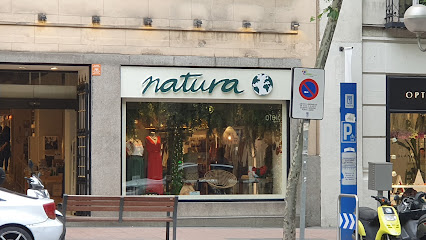
DIOR Madrid Ortega Store
Explore the elegance of DIOR in Madrid's Salamanca district, where luxury fashion meets exquisite design and unparalleled service.

BALENCIAGA
Discover Balenciaga in Salamanca, Madrid - a premier destination for luxury women's and men's fashion, accessories, and unforgettable style.
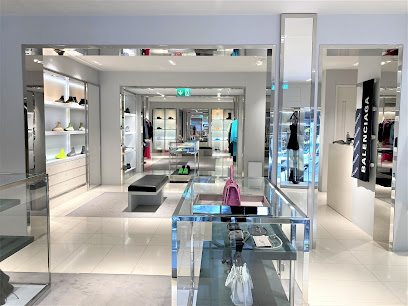
Amarcord Retro Concept Store
Explore the Amarcord Retro Concept Store in Madrid's Salamanca district for unique antiques, vintage gifts, and nostalgic treasures. A must-visit shopping destination!
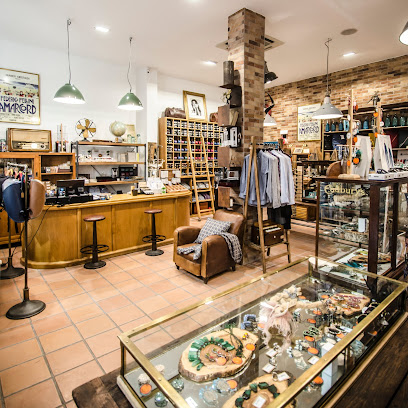
Stella McCartney Madrid
Explore the luxurious and sustainable fashion offerings at Stella McCartney Madrid, a premier destination for eco-friendly women’s clothing and accessories.
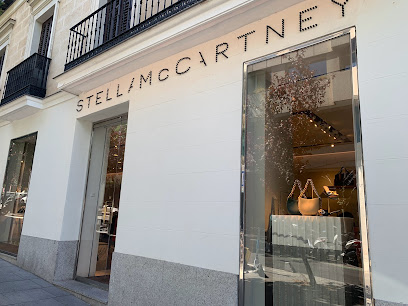
Pinko Store Madrid Serrano
Discover fashion elegance at Pinko Store Madrid Serrano, where style meets sophistication in the heart of Salamanca.
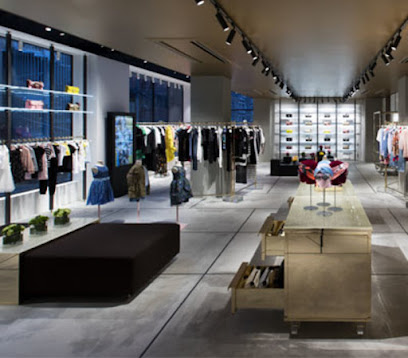
Marni
Discover the chic and contemporary styles of Marni, a must-visit dress store in the upscale Salamanca district of Madrid.
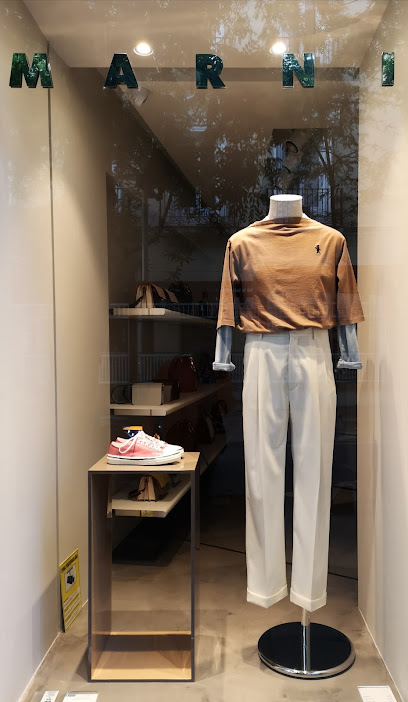
Al sur
Explore Al Sur, a stylish women's clothing store in Madrid's Salamanca district, offering trendy apparel and unique fashion finds.

boutique borja
Discover Boutique Borja in Salamanca, Madrid – a treasure trove of stylish dresses and personalized shopping experiences in a chic setting.

Unique tienda de ropa
Explore the unique women's clothing store in Madrid's Salamanca district, where stylish designs meet modern elegance for every occasion.
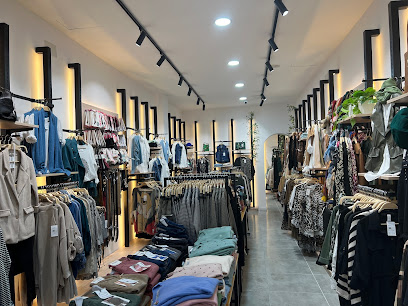
Essential bars & hidden hideouts
Salmon Guru
Experience the vibrant cocktail culture at Salmon Guru, a must-visit bar in Madrid offering innovative drinks and delicious culinary delights.
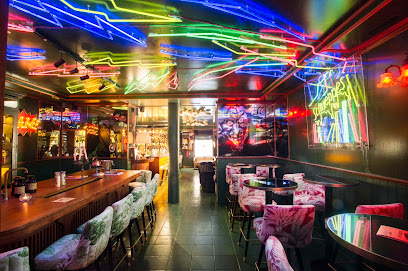
a.n.E.l. Tapas & Lounge Bar Madrid
Experience authentic Spanish cuisine in Madrid's Salamanca district at a.n.E.l. Tapas & Lounge Bar, a vibrant tapas bar offering a delightful culinary adventure.
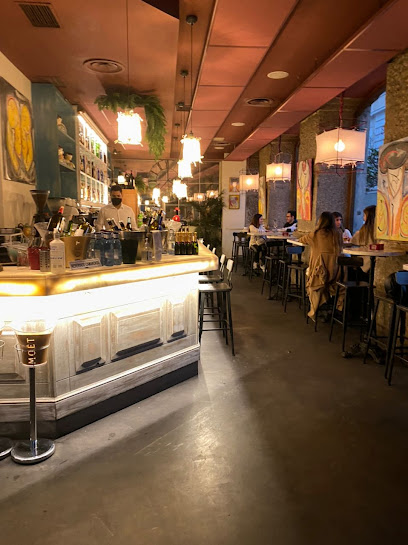
Jurucha
Discover the heart of Spanish cuisine at Jurucha, a vibrant tapas bar in Madrid's Salamanca district, offering authentic flavors and a warm atmosphere.
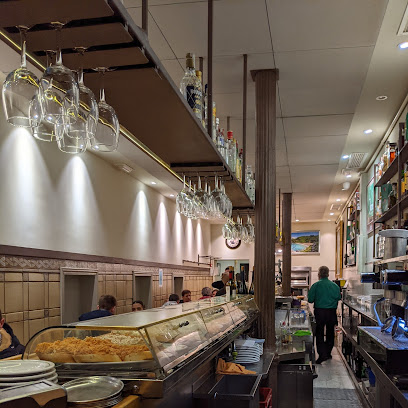
CarmenBar
Experience the vibrant flavors of Spain at CarmenBar in Salamanca, where traditional tapas meet modern Mediterranean cuisine.
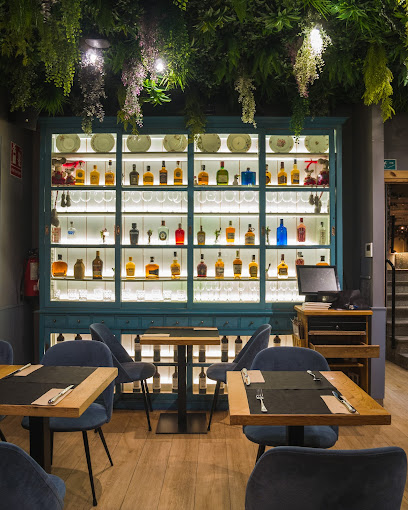
The Shaker
Discover the heart of Madrid's nightlife at The Shaker, where exquisite cocktails meet an energetic ambiance in the Salamanca district.
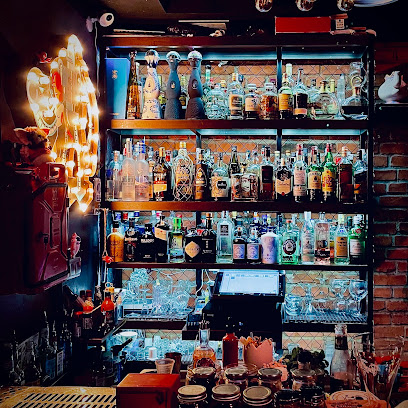
Bar Pitcher and Pipa
Discover the charm of Bar Pitcher and Pipa, a cozy beer hall in Madrid's Salamanca district, offering a delightful selection of local and international brews.
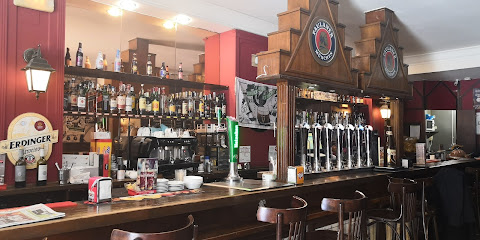
Bar Tula
Discover Bar Tula, a cozy pub in Madrid's Salamanca district, perfect for enjoying local drinks and tapas in a warm and inviting atmosphere.
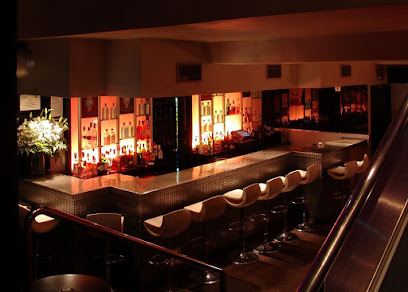
Fénix Cocktail Bar
Experience the elegance of Fénix Cocktail Bar in Madrid's Salamanca, where innovative cocktails meet a vibrant atmosphere for unforgettable nights.
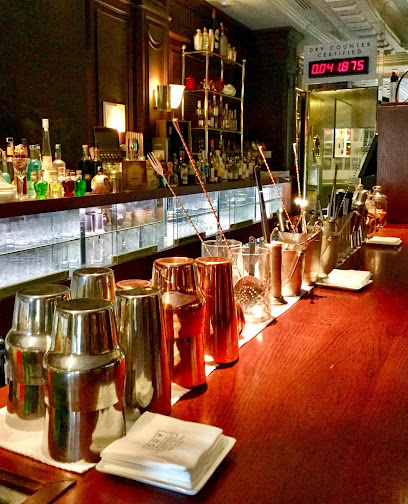
W42
Discover the lively atmosphere of W42, a vibrant bar in Salamanca, where delicious tapas and fine cocktails await every visitor.
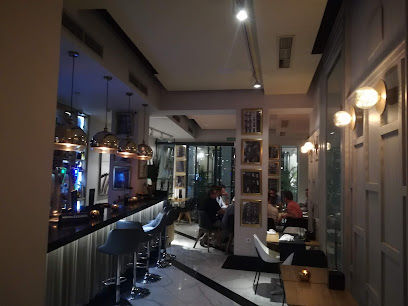
MAGERIT Cocktail Bar
Discover the vibrant atmosphere and expertly crafted cocktails at MAGERIT Cocktail Bar in the heart of Salamanca, Madrid's nightlife hub.
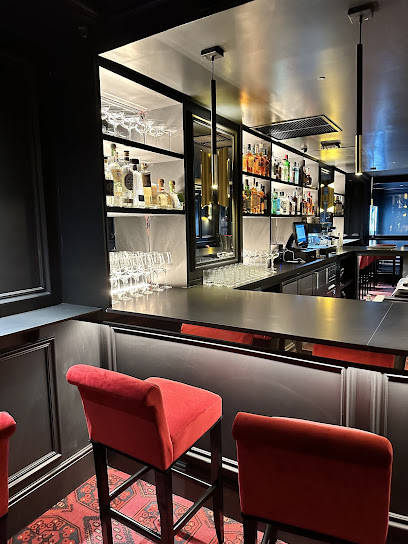
Local Phrases
-
- HelloHola
[oh-lah] - GoodbyeAdiós
[ah-dee-ohs] - YesSí
[see] - NoNo
[noh] - Please/You're welcomePor favor/De nada
[por fah-vor/deh nah-dah] - Thank youGracias
[grah-thyahs] - Excuse me/SorryPerdón/Lo siento
[pair-dohn/loh syen-toh] - How are you?¿Cómo estás?
[koh-moh ehs-tahs] - Fine. And you?Bien. ¿Y tú?
[byen. ee too] - Do you speak English?¿Hablas inglés?
[ah-blahs een-glehs] - I don't understandNo entiendo
[noh ehn-tyen-doh]
- HelloHola
-
- I'd like to see the menu, pleaseMe gustaría ver la carta, por favor
[meh goos-tah-ree-ah vehr lah kar-tah, por fah-vor] - I don't eat meatNo como carne
[noh koh-moh kahr-neh] - Cheers!¡Salud!
[sah-lood] - I would like to pay, pleaseQuisiera pagar, por favor
[kee-see-eh-rah pah-gahr, por fah-vor]
- I'd like to see the menu, pleaseMe gustaría ver la carta, por favor
-
- Help!¡Ayuda!
[ah-yoo-dah] - Go away!¡Vete!
[veh-teh] - Call the Police!¡Llama a la Policía!
[yah-mah ah lah poh-lee-thee-ah] - Call a doctor!¡Llama a un médico!
[yah-mah ah oon meh-dee-koh] - I'm lostEstoy perdido
[ehs-toy pair-dee-doh] - I'm illEstoy enfermo
[ehs-toy ehn-fehr-moh]
- Help!¡Ayuda!
-
- I'd like to buy...Me gustaría comprar...
[meh goos-tah-ree-ah kohm-prahr] - I'm just lookingSolo estoy mirando
[soh-loh ehs-toy mee-rahn-doh] - How much is it?¿Cuánto cuesta?
[kwan-toh kwehs-tah] - That's too expensiveEs demasiado caro
[ehs deh-mah-syah-doh kah-roh] - Can you lower the price?¿Puede bajar el precio?
[pweh-deh bah-har ehl pree-syoh]
- I'd like to buy...Me gustaría comprar...
-
- What time is it?¿Qué hora es?
[keh oh-rah ehs] - It's one o'clockEs la una
[ehs lah oo-nah] - Half past (10)Las diez y media
[lahs dyehth ee meh-dyah] - MorningMañana
[mah-nyah-nah] - AfternoonTarde
[tahr-deh] - EveningNoche
[noh-cheh] - YesterdayAyer
[ah-yehr] - TodayHoy
[oy] - TomorrowMañana
[mah-nyah-nah] - 1Uno
[oo-noh] - 2Dos
[dohs] - 3Tres
[trehs] - 4Cuatro
[kwa-troh] - 5Cinco
[theen-koh] - 6Seis
[sehs] - 7Siete
[syeh-teh] - 8Ocho
[oh-choh] - 9Nueve
[nweh-veh] - 10Diez
[dyeth]
- What time is it?¿Qué hora es?
-
- Where's a/the...?¿Dónde está...?
[dohn-deh ehs-tah] - What's the address?¿Cuál es la dirección?
[kwal ehs lah dee-rehk-syon] - Can you show me (on the map)?¿Puedes enseñarme (en el mapa)?
[pweh-dehs ehn-seh-nyahr-meh (ehn ehl mah-pah)] - When's the next (bus)?¿Cuándo es el próximo (autobús)?
[kwan-doh ehs ehl proh-ksy-moh (ow-toh-boos)] - A ticket (to ....)Un billete (a ...)
[oon bee-yeh-teh (ah ...)]
- Where's a/the...?¿Dónde está...?
History of Salamanca
-
Salamanca, established in the mid-19th century, was part of Madrid's urban expansion during the period of industrialization. Originally a collection of small villages, it became a fashionable district for the affluent, characterized by wide avenues and elegant homes. The construction of the Gran Vía and the introduction of public transport facilitated its growth as a central area in Madrid.
-
In the early 20th century, Salamanca emerged as a cultural hub, attracting artists, intellectuals, and affluent citizens. The establishment of institutions such as the National Archaeological Museum and the Thyssen-Bornemisza Museum contributed to its reputation as a center for art and culture. The architecture of the area reflects diverse styles, including Neoclassical and Modernist influences, symbolizing the aspirations of the Spanish bourgeoisie.
-
During the Spanish Civil War (1936-1939), Salamanca, like much of Madrid, experienced considerable turmoil. The area was impacted by bombing raids, and many historical buildings were damaged. Post-war reconstruction efforts aimed to restore Salamanca's status as a prestigious neighborhood, leading to the development of new commercial and residential spaces that maintained the area's elegance.
-
The late 20th century saw Salamanca experience economic growth and gentrification, attracting a new wave of wealth and transforming its social fabric. High-end boutiques, luxury brands, and gourmet restaurants began to populate the streets, further establishing Salamanca as one of Madrid's prime residential and commercial areas. The neighborhood became synonymous with affluence and exclusivity.
-
Today, Salamanca is recognized for its cultural heritage, combining historical significance with modern amenities. The neighborhood hosts numerous cultural events, art exhibitions, and gastronomic festivals, contributing to a vibrant community identity. The preservation of historic buildings alongside contemporary developments reflects a balance between honoring the past and embracing the future.
Salamanca Essentials
-
Salamanca is easily accessible from other neighborhoods in Madrid. The neighborhood is well-served by the Madrid Metro, with Line 4 (the brown line) running through key stations such as Diego de León and Velázquez. From central areas like Sol or Gran Vía, you can transfer to Line 4. Additionally, several bus lines connect Salamanca to other parts of the city, including lines 1, 2, 9, and 19. Taxis and rideshare services like Uber are also readily available throughout Madrid.
-
Salamanca is a walkable neighborhood, with many attractions, boutiques, and eateries in close proximity. The Madrid Metro is the most efficient way to navigate, with stations at strategic locations. Buses also operate frequently, making it easy to reach nearby neighborhoods. For those who prefer cycling, bike rentals are available, and the city has a bike-sharing system called BiciMAD. Be mindful of pedestrian areas where vehicles are restricted.
-
Salamanca is considered one of the safer neighborhoods in Madrid for tourists. However, standard precautions should be taken, especially in crowded areas such as markets or public transport. While there are no specific high-crime areas targeting tourists, always stay alert and safeguard your belongings. Avoid dark, deserted streets at night, particularly around the edges of the neighborhood.
-
In case of an emergency, dial 112 for immediate assistance in Spain. This number connects you to police, fire, and medical services. In Salamanca, there are several hospitals and clinics available, including Hospital Universitario Fundación Jiménez Díaz. For non-urgent medical issues, pharmacies are widely available and can assist with over-the-counter medications.
-
Fashion: Do wear smart casual attire, especially in upscale restaurants and shops. Avoid overly casual clothing like beachwear. Religion: Do respect religious sites and dress modestly when visiting churches. Public Transport: Do give your seat to elderly or disabled passengers and be quiet on public transport. Don't eat or drink on the Metro. Greetings: Do greet locals with a friendly 'Hola' and a smile. Eating & Drinking: Do try local specialties like tapas and churros. Don't be surprised if locals share their food; it's a sign of hospitality.
-
To experience Salamanca like a local, visit the various markets, such as Mercado de la Paz, for fresh produce and gourmet products. Enjoy a leisurely stroll around the neighborhood's beautiful parks, like Parque de la Elipa. Try to engage in conversations with local shopkeepers or café owners, as they often share interesting stories about the area. Don't miss out on the lesser-known art galleries and boutiques that showcase local talent.
Trending Landmarks in Salamanca
-
El Retiro Park
-
Plaza Mayor
-
Puerta de Alcalá
-
Las Ventas Bullring
-
Velázquez Palace
-
Casa de América
-
Monumento a Blas de Lezo
-
Museo Arte Público
-
Monument to Christopher Columbus
-
Descubrimiento Garden
-
Palacio del Marqués de Salamanca
-
Monumento a Jorge Juan y Santacilia
-
Monumento al Descubrimiento de América
-
Monumento al Marqués de Salamanca
-
Plaza del Marqués de Salamanca
Nearby Cities to Salamanca
-
Things To Do in Segovia
-
Things To Do in Toledo
-
Things To Do in Avila
-
Things To Do in Valladolid
-
Things To Do in Salamanca
-
Things To Do in Burgos
-
Things To Do in Teruel
-
Things To Do in Zaragoza
-
Things To Do in Bragança
-
Things To Do in Valencia
-
Things To Do in Pamplona
-
Things To Do in Bilbao
-
Things To Do in Badajoz
-
Things To Do in Huesca
-
Things To Do in Santander













